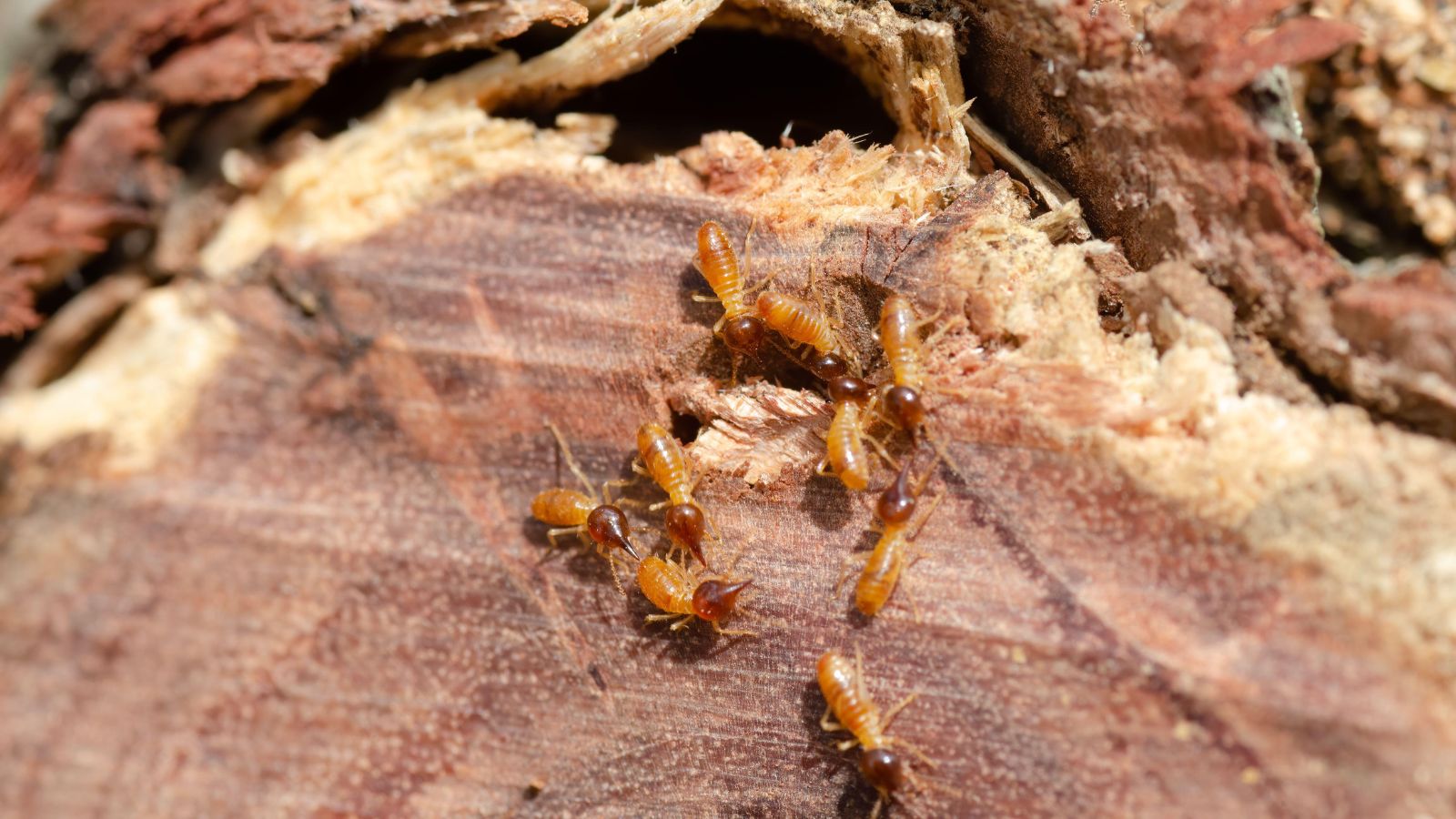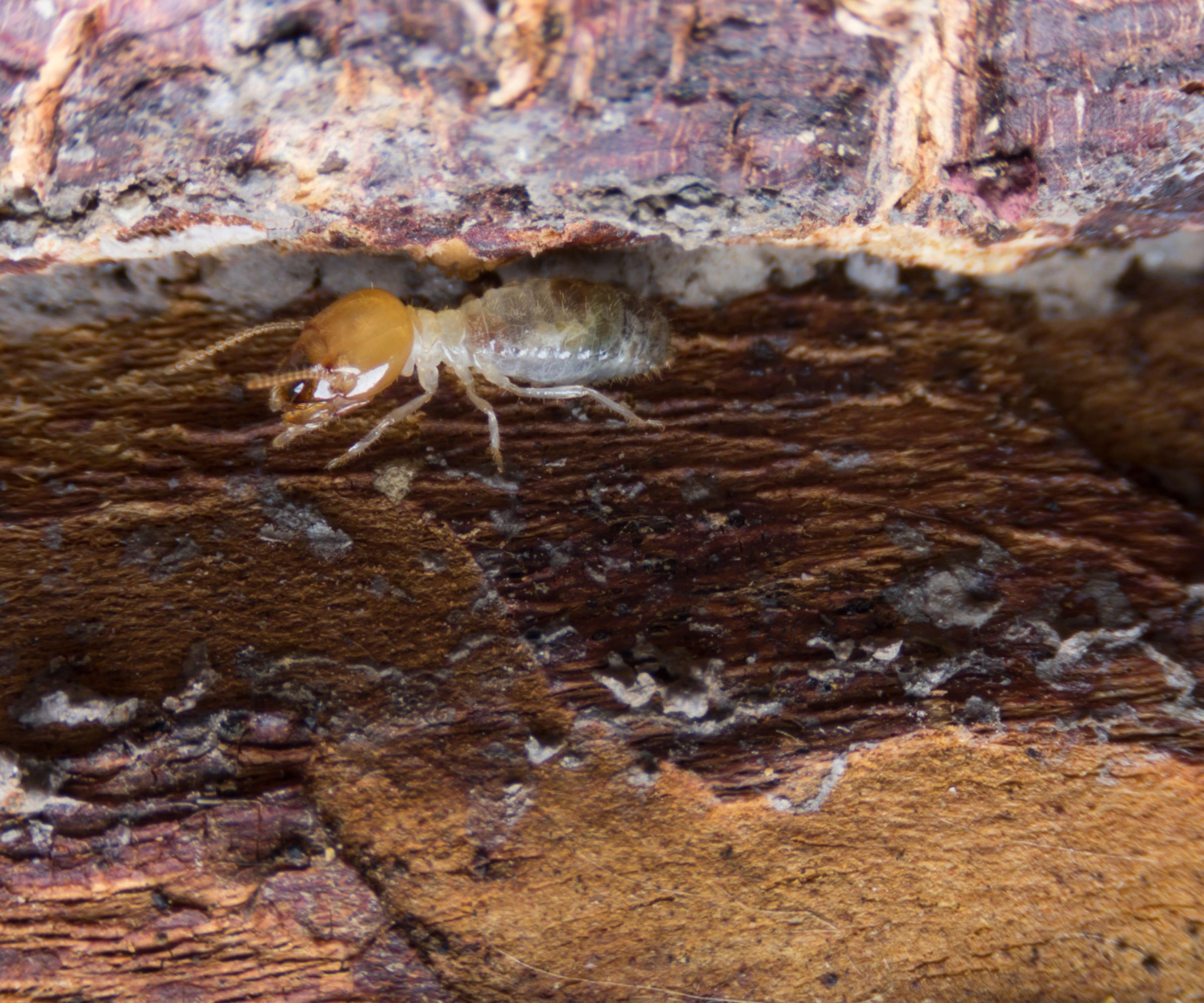How to get rid of termites naturally – 6 ways to save your home from pests
Save your property from termite damage with these six ways to get rid of termites


Termites can be troublesome pests that can severely damage properties even if they are not directly harmful to humans. Many people wonder how to get rid of termites naturally to prevent stress and maintain their home safely.
There are three kinds of termites but all three can cause irreparable damage to wooden structures, much unlike other common household pests such as getting rid of gnats or getting rid of ants. This can cause catastrophic damage to homes with wooden frames, wood ceiling ideas or foundations, so dealing with the infestation quickly is of the utmost importance.
Here, we look at seven ways to get rid of termites from your home naturally, to rid your house of these pests before it is too late.

Rachel has written for lifestyle magazines for many years, with a particular focus on gardening.
Now focusing on gardening content on Homes and Gardens and its sister brands, she finds every day is a journey of discovery, whether it is learning about new plants or gardening techniques, or sharing the advice of passionate horticultural experts and garden designers including top pest advice for gardens.
How to get rid of termites naturally

There are a few methods that can help you get rid of termites naturally, however it is important to find out if it is termites causing your problems first.
'There are a few signs that you have termites in your home,' explains Rachel Crow, garden expert at Homes & Gardens. 'Common symptoms such as discolored drywall, peeling paint without water damage, wood that sounds hollow, or buckling wood flooring ideas can all be signs of a termite infestation in your home.'
Once you have established that termites are the cause of the deterioration of your home, it is important to act quickly before they render your property unsafe. While you can use natural means to try and dissuade termites, serious infestations may need to be dealt with by trained exterminators or pest control to protect your property from irreparable damages.
1. Boric acid
'Spraying boric acid is a great way to get rid of termites, just as it is effective for killing carpenter ants,' says Rachel. 'A natural pesticide, boric acid is also a wood preservative so spraying this powder diluted in water can kill two birds with one stone.'
Design expertise in your inbox – from inspiring decorating ideas and beautiful celebrity homes to practical gardening advice and shopping round-ups.
Although boric acid can be used for inside infestations, it is better when used outside due to its strength. If you do want to try boric acid inside, combine only one teaspoon in a cup of water and use only where needed. 'Make sure to wear a mask and goggles when spraying boric acid,' warns Rachel, 'and gloves should be considered too.'
Boric acid does not kill termites straight away but works by preventing them from gaining nutrients from their food, ridding you of your termite problem over time.
2. Cardboard traps
Creating traps from cardboard is an effective way of getting rid of termites naturally, but it may not be the best method for the faint of heart or those who do not like directly dealing with insects.
Place a cardboard box in the area of the termite infestation and leave it for a few days to allow the termites to infest the cardboard. Once full, burn the cardboard and destroy the termites trapped inside.
This method should be repeated multiple times until your traps begin to turn out empty. Because of the amount of time this method can take, it is advised to pair this method with another such as poison or boric acid.
3. Natural Nematodes
'Nematodes are frequently used by gardeners to help control common houseplant pests and garden pests,' explains Rachel. 'these small roundworms attack and kill pests quickly and are not dangerous to people or animals as boric acid is.'
To use nematodes against termites effectively, mix them into a large bucket of water before spraying the mixture onto infested areas. You should repeat this spraying daily.
'Make sure you purchase the correct nematodes for the right pests,' reminds Rachel, as different nematodes target different pest species.
4. Diatomaceous earth
'Another gardeners friend, diatomaceous earth is an effective treatment for termites alongside other garden pests,' Rachel says.
Diatomaceous earth is deadly to insects with its razor-sharp particles and dehydrating properties. The fine sand works by cutting through the pest's outer shell and drawing moisture from the body, drying out the pest so they are easy to sweep away.
Because diatomaceous earth is safe for humans, the dust can be spread both indoors and outdoors.
5. Vinegar
White vinegar is a common household product that can be used for a vast array of purposes such as cleaning with vinegar and including an effective homemade bug spray. Combining half a cup of vinegar with the juice of two lemons creates an effective, acidic spray that is safer than boric acid but also kills termites.
This solution is also ideal for soaking into any damaged areas of the wood to clear cracks of termites. Repeat the process of spraying lemon juice and white vinegar into infected areas, checking every few days to see if the termites have been successfully removed.
What naturally keeps termites away?
While it can be difficult to prevent termites completely, using natural methods such as spraying orange oil or orange peel to deter pests around your garden, spreading diatomaceous earth, or spreading boric acid near entry points can all help to prevent termites from entering your home or destroying your garden.
What attracts termites to a house?
Termites are attracted to wood, so any wooden structures in or around your house are an instant draw for all termite species. What's more, some are also drawn in by moisture, especially under house foundations, in crawl spaces, and around any holes or cracks in outdoor pipes and guttering.

Chiana has been at Homes & Gardens for two years and is our resident 'queen' of non-toxic living. She spends most of her time producing content for the Solved section of the website, helping readers get the most out of their homes through clever decluttering, cleaning, and tidying tips. She was named one of Fixr's top home improvement journalists in 2024.